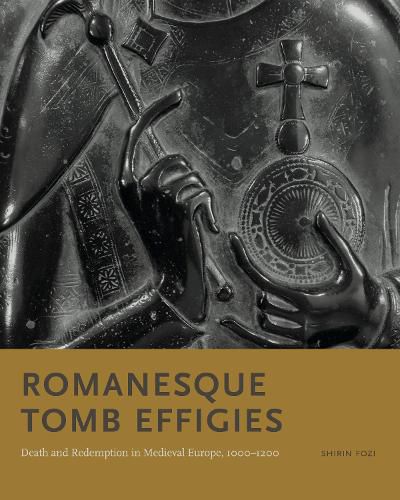Readings Newsletter
Become a Readings Member to make your shopping experience even easier.
Sign in or sign up for free!
You’re not far away from qualifying for FREE standard shipping within Australia
You’ve qualified for FREE standard shipping within Australia
The cart is loading…






Framed by evocative inscriptions, tumultuous historical events, and the ambiguities of Christian death, Romanesque tomb effigies were the first large-scale figural monuments for the departed in European art. In this book, Shirin Fozi explores these provocative markers of life and death, establishing early tomb figures as a coherent genre that hinged upon histories of failure and frustrated ambition.
In sharp contrast to later recumbent funerary figures, none of the known European tomb effigies made before circa 1180 were commissioned by the people they represented, and all of the identifiable examples of these tombs were dedicated to individuals whose legacies were fraught rather than triumphant. Fozi draws on this evidence to argue that Romanesque effigies were created to address social rather than individual anxieties: they compensated for defeat by converting local losses into an expectation of eternal victory, comforting the embarrassed heirs of those whose histories were marked by misfortune and offering compensation for the disappointments of the world.
Featuring numerous examples and engaging the visual, historical, and theological contexts that inform them, this groundbreaking work adds a fresh dimension to the study of monumental sculpture and the idea of the individual in the northern European Middle Ages. It will appeal to scholars of art history and medieval studies.
$9.00 standard shipping within Australia
FREE standard shipping within Australia for orders over $100.00
Express & International shipping calculated at checkout
Framed by evocative inscriptions, tumultuous historical events, and the ambiguities of Christian death, Romanesque tomb effigies were the first large-scale figural monuments for the departed in European art. In this book, Shirin Fozi explores these provocative markers of life and death, establishing early tomb figures as a coherent genre that hinged upon histories of failure and frustrated ambition.
In sharp contrast to later recumbent funerary figures, none of the known European tomb effigies made before circa 1180 were commissioned by the people they represented, and all of the identifiable examples of these tombs were dedicated to individuals whose legacies were fraught rather than triumphant. Fozi draws on this evidence to argue that Romanesque effigies were created to address social rather than individual anxieties: they compensated for defeat by converting local losses into an expectation of eternal victory, comforting the embarrassed heirs of those whose histories were marked by misfortune and offering compensation for the disappointments of the world.
Featuring numerous examples and engaging the visual, historical, and theological contexts that inform them, this groundbreaking work adds a fresh dimension to the study of monumental sculpture and the idea of the individual in the northern European Middle Ages. It will appeal to scholars of art history and medieval studies.